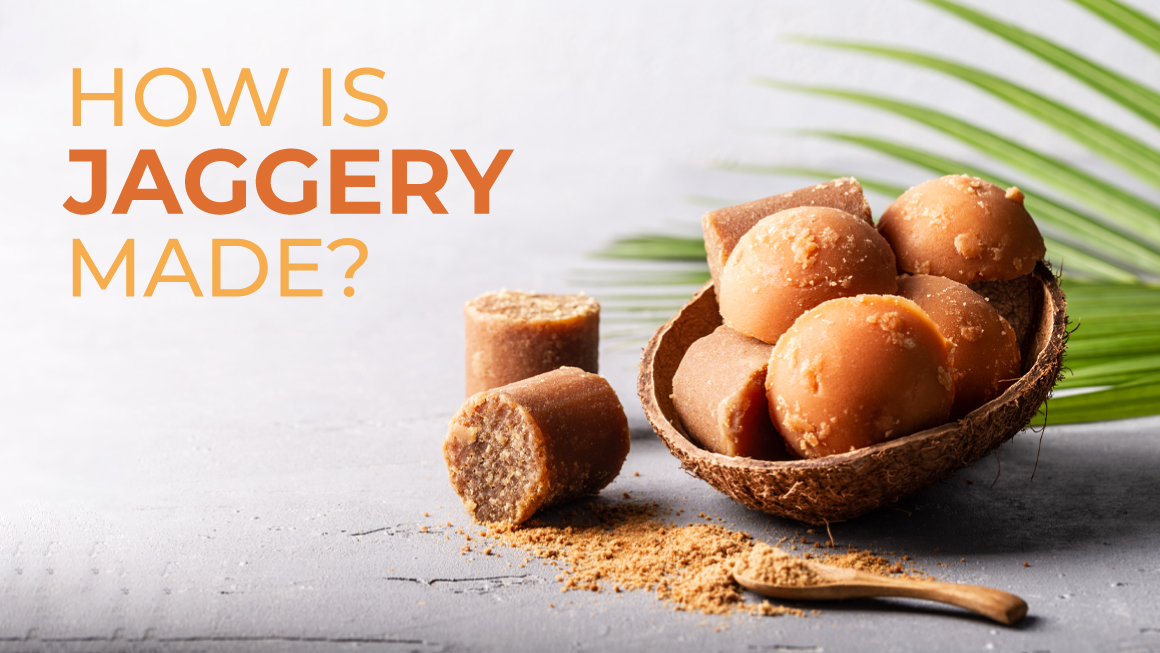How is Jaggery Made?
Have you ever wondered how jaggery is made? From its sweet taste to its crunchy texture, it is one of the most beloved snacks in the world. Its manufacturing process is complex, lengthy, and incredibly interesting!
If you love the sweet taste of jaggery but don’t know the whole story behind it, then you’re in for a treat. Today we’ll be uncovering the detailed process of its manufacturing.
So, join us as we take a deep dive into the fascinating world of jaggery manufacturing and learn what makes this sweetener truly unique!
What is Jaggery?
For centuries, many cultures, especially those in India, Southeast Asia, Africa, and the Caribbean, have utilized jaggery, a sweetener crafted from raw, unrefined sugar cane!
To make jaggery, the juice from sugarcane or palm is extracted, boiled until thickened, then cooled until solid blocks form. For convenience of use, this traditional sweetener is frequently made into jaggery powder. The benefits of jaggery powder include its high iron content, which helps prevent anemia, and its ability to facilitate digestion. Because jaggery keeps its vitamins and minerals, it’s a better option for sweetening meals and drinks than refined sugar.
Jaggery is an unprocessed form of cane sugar, and its trademark golden-brown color comes from the manufacturing process. When compared to processed white sugar, it has a coarser texture, a distinct aroma, and a fuller flavor. That’s why those seeking a natural alternative to white sugar have made it a popular choice.
How is Jaggery Made?
But what exactly is the manufacturing process behind it? Let’s exactly explore how artisans make this sweet treat!
The first step in the process begins with sugar cane (or other sources such as dates, palm sap, and various type of plants). Crushing the cane extracts its juices. After extraction, the juice undergoes a heated filtration using a specialized furnace known as a “jaggery furnace.” During boiling, it eliminates impurities such as dirt and sand and reduces the water content until it achieves a syrup-like consistency.
After completing the boiling process, pour the jaggery syrup into molds or trays to cool and solidify. Then cut the solidified syrup into familiar shapes seen in markets and stores, preparing it for packaging.
Conclusion
So now you know, when buying jaggery for your favorite dishes, you can rest assured that you’re getting all-natural sweetness—straight from Mother Nature herself. For this reason, prioritize Keerthi Nirmal as your first option when choosing jaggery because we commit to providing you with the highest-quality goods

